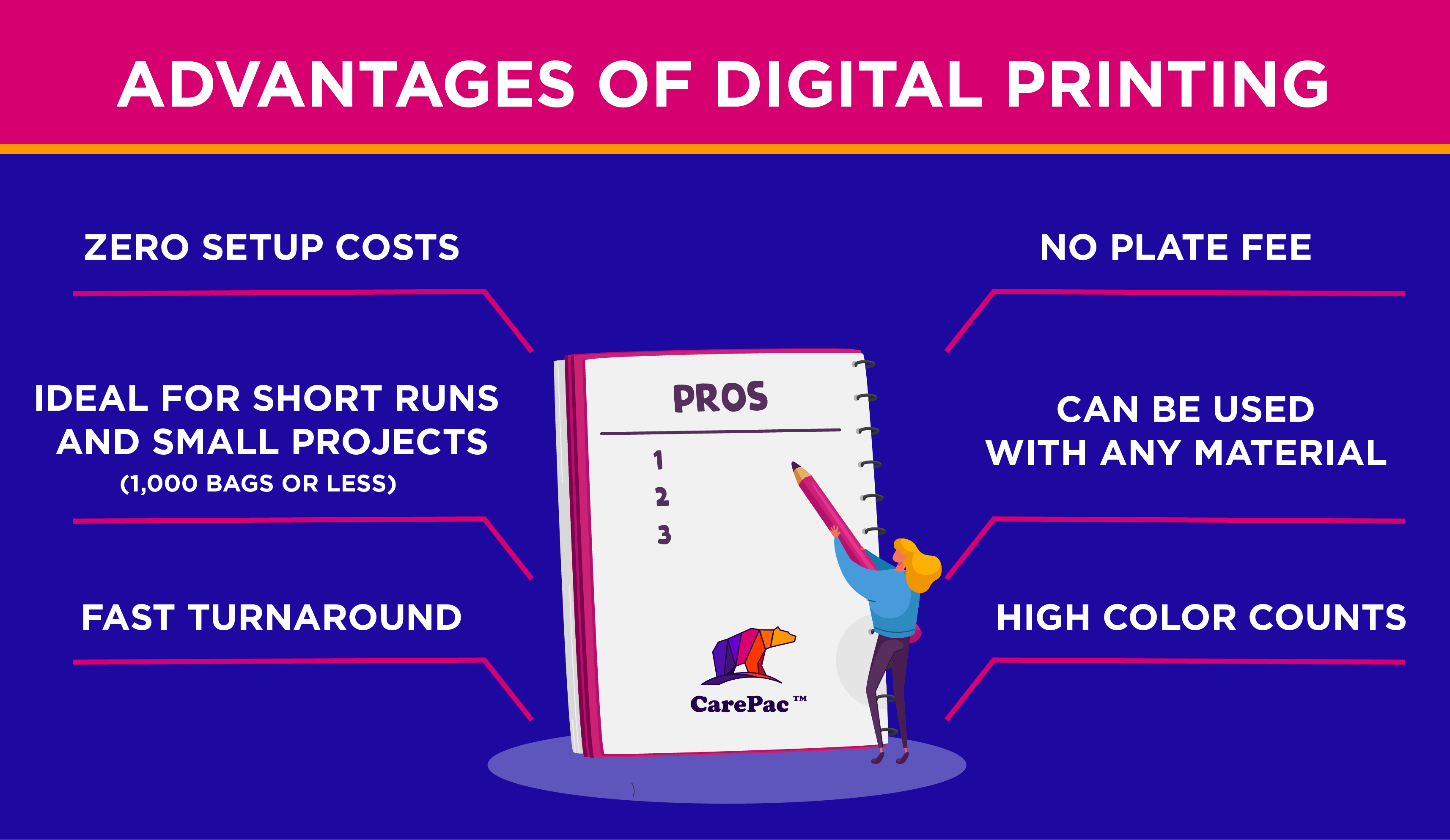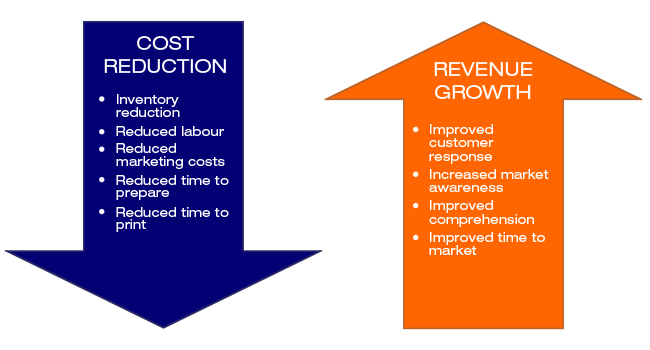Unknown Facts About Digital Printing
Unknown Facts About Digital Printing
Blog Article
Examine This Report about Digital Printing
Table of ContentsThe 30-Second Trick For Digital PrintingThe 8-Second Trick For Digital PrintingEverything about Digital PrintingGetting My Digital Printing To WorkIndicators on Digital Printing You Should KnowDigital Printing for Beginners
Variable information printing, such as straight mail with individualized codes and addresses, is preferably matched for electronic printing. Digital fast printing just requires four actions of design, testimonial, printing and binding to get everything done. Digital fast printing has an unequaled advantage: print on demand.According to PMMI, digital printing allows brands and producers to respond rapidly to consumer demands while enhancing the supply chain, reducing warehousing price and waste, and taking pleasure in faster time to market. That all noises terrific, but how does this modern technology do all that? The significant differentiator of these innovations is that there are no set up fees and no plates with digital printing.
The Digital Printing Diaries
According to Wikipedia, the biggest distinction between electronic printing and conventional approaches such as lithography, flexography, gravure, or letterpress - Digital Printing is that there is no need to replace printing plates in electronic printing, whereas in these analog printing approaches the plates are continuously replaced. This causes quicker turn-around time and reduces cost when making use of digital printing.
Fast production implies getting your item to market faster. It likewise indicates it's much easier and faster to make adjustments later on, when you change a recipe, add a SKU, or create seasonal product packaging. Digital printing is extremely adaptable, so it's easy to make modifications to the plan design promptly. It all goes back to the plates.
With standard printing approaches, short-run printing is simply not feasible. Due to the fact that a wonderful layout can make or break your item, digital printing continually produces top notch, clear and colorful graphics each time.
Digital printing is the procedure of printing digital-based photos directly onto a range of media substrates. There is no need for a printing plate, unlike with balanced out printing. Digital documents such as PDFs or desktop computer posting documents can be sent directly to the electronic printing machine to print theoretically, photo paper, canvas, textile, synthetics, cardstock and various other substrates.
The Best Strategy To Use For Digital Printing
According to PMMI, digital printing permits brand names and producers to respond rapidly to client needs while boosting the supply chain, minimizing warehousing expense and waste, and taking pleasure in faster time to market. That all sounds fantastic, yet just how does this technology do all that? The significant differentiator of these innovations is that there are no set-up costs and no plates with digital printing.
According to Wikipedia, the best difference between electronic printing and typical methods such as lithography, flexography, gravure, or letterpress is that there is no requirement to replace printing plates in electronic printing, whereas in these analog printing methods home plates are consistently replaced. This results in quicker turn-around time and lowers expense when making use of digital printing.

All about Digital Printing
With standard article source printing methods, short-run printing see this is just not possible. Because a great style can make or break your product, electronic printing consistently develops high-grade, clear and vivid graphics each time.

According to PMMI, digital printing allows brand names and producers to respond promptly to customer needs while boosting the supply chain, reducing warehousing price and waste, and enjoying faster time to market. That all noises excellent, but just how does this technology do all that? The major differentiator of these technologies is that there are no set up costs and no plates with digital printing.
The Definitive Guide to Digital Printing
According to Wikipedia, the best distinction between digital printing and typical approaches such as lithography, flexography, gravure, or letterpress is that there is no need to change printing plates in electronic printing, whereas in these analog printing methods home plates are repeatedly replaced. This causes quicker turn-around time and reduces price when making use of digital printing.
Speedy manufacturing implies web obtaining your product to market quicker. It also means it's simpler and faster to make changes later on, when you transform a dish, include a SKU, or develop seasonal packaging. Digital printing is extremely versatile, so it's simple to make adjustments to the bundle design rapidly. Everything returns to home plates.

Things about Digital Printing
Digital printing is the process of printing digital-based photos straight onto a variety of media substrates. There is no demand for a printing plate, unlike with balanced out printing. Digital data such as PDFs or desktop publishing data can be sent straight to the electronic printing machine to print on paper, photo paper, canvas, textile, synthetics, cardstock and other substratums.
Report this page